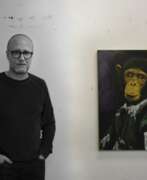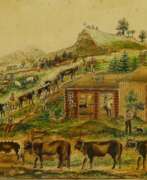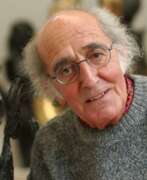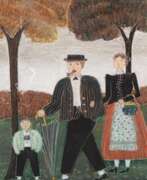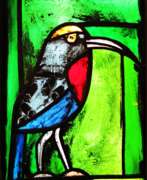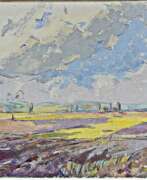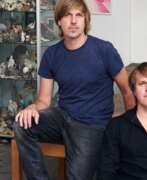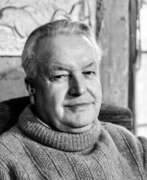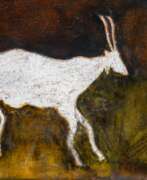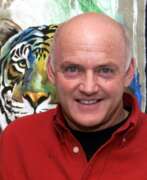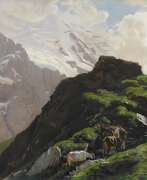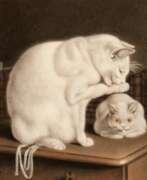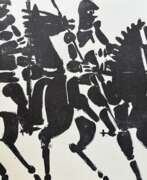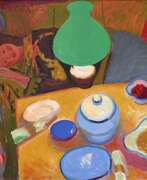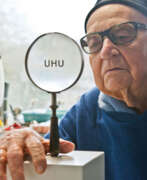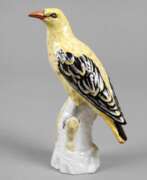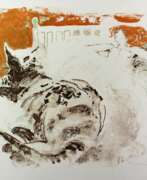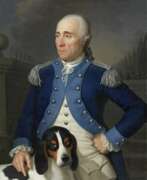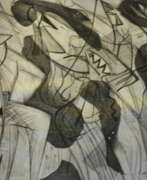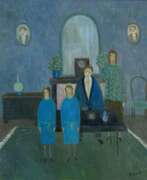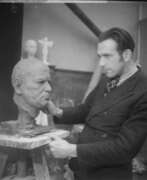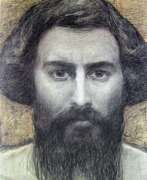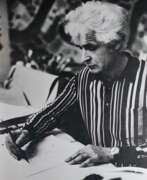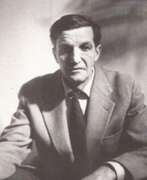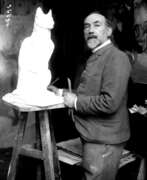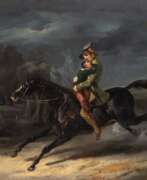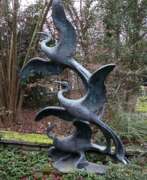Animalistic Switzerland
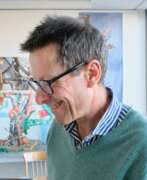

Urs Aeschbach is a Swiss media artist working in various techniques. Nature is always a pictorial theme in Urs Aeschbach's paintings. Her main characters are mushrooms, woody plants, animals, jellyfish, as well as dogs and horses. The artist's paintings are inspired by photographs and illustrations. In addition to paintings, Eschbach creates art and construction projects, video works, as well as constructions and installations.
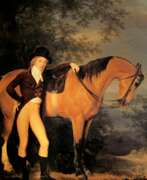

Jacques-Laurent Agasse is a Swiss animal painter.
As a young man he studied at the veterinary school in Paris and was well versed in equine anatomy. In 1880 he moved to London and began painting dogs and racehorses, as well as exotic animals such as giraffes and zebras, which he observed in London zoos. Later, Agasse began to paint landscapes, portraits, and genre scenes as well.
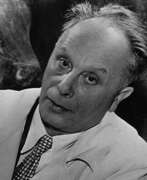

Georg Ehrlich was an Austrian and British sculptor and graphic artist.
At the School of Arts and Crafts in Vienna, Ehrlich mastered etching and lithography, and served in the Austrian army during World War I. He held his first solo exhibition in Munich in 1920 and won a reputation as a painter and printmaker. In 1920 he had his first solo exhibition in Munich and gained a reputation as a graphic artist working in an expressionist manner. Returning to Vienna in 1924, he began to work primarily as a sculptor in the realist style and actively participated in exhibitions.
In 1937 Ehrlich was awarded the Gold Medal at the World Exhibition in Paris, but in the same year he fled to England, and after the war, in 1947 he became a British citizen. Georg Ehrlich worked actively, creating numerous portrait and animalistic sculptures, as well as memorials, participating in numerous exhibitions. In 1963, Ehrlich became a Royal Academician.




Tsugouharu Foujita was a French twentieth-century artist of Japanese descent. He is known for his unique style, combining elements of Japanese painting and printmaking with European realism.
Foujita created a wide range of works in a variety of genres, including nudes, images of cats, portraits of women and children, and self-portraits. He later converted to Catholicism and began creating paintings with religious themes. The artist was internationally recognized, and his work was exhibited in many countries around the world. His work was characterized by the perfection of pictorial technique, virtuosity of drawing and an atmosphere of sophistication. The master also showed talent in graphics, photography, ceramics, theater, cinema and fashion design. Prices for his paintings were comparable to those of Picasso's works.


Ernst Frick was a Swiss painter. As far as can be ascertained, Frick began painting around 1917. He was taught by Arthur Segal in Ascona. Frick painted in charcoal, oil and watercolour. His preference was for nature and animals, but also working people. He was influenced by the artist group Der Blaue Reiter. In 1924 he was a founding member of the artists' association Der Grosse Bär. After the dissolution of the group Der Grosse Bär in 1941, he remained artistically active and joined newly formed Asconese artist groups.
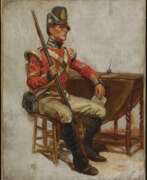

Emile Edwin Ganz is a Swiss-Belgian painter, specializing in the representation of horses and military scenes. In his early days, Ganz mainly drew military scenes, a genre that only a few 19th-century artists mastered. His masterpiece in the genre is The Attack of Scherpenheuvel, a report on the maneuvers of the grenadiers in 1894. In 1901 he entered the service of Princess Clémentine as a painter; he held this position until 1903. In 1903, he also brushed some of King Leopold II's horses. From that moment, he was no longer interested only in the horse itself, but in the regional draft horse, as well as in the people and the rural world: newspaper sellers, old horses in a depot, the harvest in the fields , beet harvest, landscape. Many of his designs for military uniforms were printed in color lithograph.
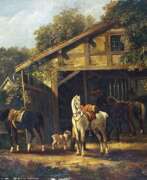

Johann Conrad Gessner was a Swiss battle painter and lithographer.
He studied painting first with his artist father Solomon Gessner (1730-1788), then at the Dresden Art Academy, before traveling to Naples and Rome. Back in Germany, Gessner became known for his equestrian and battle scenes, and his drawings and watercolors already had features of early Romanticism.
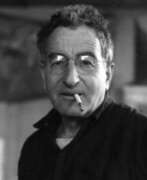

Willy Leopold Guggenheim, known as Varlin, was a Swiss painter. His figurative work emphasized the fragility of everyday life.
Varlin was friends with Hugo Loetscher and Friedrich Dürrenmatt, and painted them.
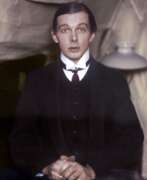

Ernst Ludwig Kirchner was a pivotal figure in the art world, known for his profound impact on 20th-century Expressionism. Born in Bavaria, Germany, on May 6, 1880, Kirchner's journey into art began with architecture studies before he found his true calling in painting and printmaking. In 1905, alongside fellow architecture students, he co-founded Die Brücke ("The Bridge"), a group that sought to revolutionize art by bridging the gap between traditional academic styles and modern artistic expression. This group was instrumental in the development of Expressionism, advocating for intense emotion conveyed through vivid colors and bold lines.
Kirchner's work, characterized by its expressive intensity and often exploring themes of urban life and the human psyche, reflects a deep engagement with the cultural and social upheavals of his time. Notably, his experiences during World War I, including a mental breakdown and subsequent discharge from military service, deeply influenced his art. Works like "Self-Portrait as a Soldier" (1915) poignantly encapsulate the personal and societal trauma of the era.
After the war, Kirchner sought solace in Davos, Switzerland, where the tranquil landscapes inspired a new direction in his work, showcasing a more serene and reflective approach. Despite his contributions to modern art, Kirchner's later years were marred by the Nazi regime's denunciation of his work as "degenerate," leading to the destruction and dispersal of many pieces. Tragically, this persecution contributed to his decision to end his life on June 15, 1938.
Kirchner's legacy is preserved through his influential body of work, from vivid urban scenes to tranquil landscapes, all marked by a distinctive, expressive style that continues to captivate art collectors and experts. His works are held in major museums worldwide, including the Museum of Modern Art in New York and the National Gallery of Art in Washington, underscoring his enduring influence on the art world.
For those interested in the profound impact of Ernst Ludwig Kirchner on modern art and Expressionism, subscribing to updates on new product sales and auction events related to his work can provide valuable insights. This subscription is an opportunity for collectors and art experts to stay informed about the availability of Kirchner's influential pieces and related events.


Rudolf Koller was a Swiss painter. He is associated with a realist and classicist style, and also with the essentially romantic Düsseldorf school of painting. Koller's style is similar to that of the realist painters Gustave Courbet and Jean-Baptiste-Camille Corot. Considered Switzerland's finest animal painter, Koller is rated alongside George Stubbs, Rosa Bonheur and Théodore Géricault. While his reputation was based on his paintings of animals, he was a sensitive and innovative artist whose well-composed works in the "plein air" tradition, including Swiss mountain landscapes, are just as finely executed.
He has been described as "the painter of the Swiss national animal", because of his paintings of cows in Swiss landscapes. He is considered, along with Frank Buchser and Gustave Eugène Castan, to be one of the most important Swiss painters of the 19th century. The Gotthardpost, or The St Gotthard Mailcoach, is one of his most famous paintings. It depicts a mail coach, drawn by white horses, speeding along a mountain road.
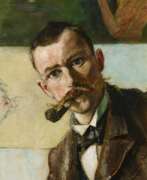

Carl August Liner was a Swiss painter, graphic artist, designer and inventor. He is sometimes referred to as Senior to distinguish him from his son, Carl Walter Liner, who was also a well known painter.
In addition to his paintings, he designed postage stamps and posters and did illustrations. It was this work that provided most of his income. He was also an amateur inventor and holds the patent for an early version of the single-axis mower.
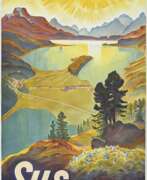

Carl Moos, otherwise Karl Franz Moos was a German and Swiss artist and illustrator, notable for his Art Deco travel and sporting posters, particularly of skiing. He trained in commercial art in Munich and worked as an illustrator for, among others, the Münchener Tagespresse. He also established himself as a creator of postcards and posters. He was a member of the Munich commercial artists' group Die Sechs, which aimed to improve the standing of advertising and poster graphics. His posters are highly sought after in the art market.


Leopold Rabus is a Swiss surrealist painter whose favorite medium is oil painting. He depicts the surrounding reality, inhabiting it with surrealistic birds, snails and yard animals, or ordinary objects. The people in Rabus's paintings, on the other hand, are often insane and horrible, but they live ordinary human lives.
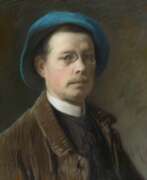

Édouard John Ravel, also known as Jean-Édouard Ravel or Edouard Ravel, was a Swiss painter, printmaker, and illustrator. Because of his many talents, he painted genre scenes, portraits, animals, landscapes, historical scenes, and allegories in a variety of techniques.


Louis Léopold Robert is a Swiss artist. He studied art in Paris with the engraver Edouard Girardet and the painter Jacques-Louis David. With their support, Robert came to Rome in 1818, where he became interested in genre painting.
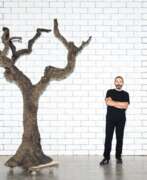

Ugo Rondinone is a Swiss-born artist widely recognized for his mastery of several different media — most prominently sculpture, drawing and painting, but also photography, architecture, video and sound installation — in the largely figurative works he has made for exhibitions in galleries, museums and outdoor public spaces around the world. He has never limited himself to a particular material, no more than he has to a single discipline. Lead, wood, wax, bronze, stained glass, ink, paint, soil and stone are all tools in a creative arsenal that the artist has employed to extend the Romantic tradition in works that are as sensitive to the passage of time as to the nuances of body language and the spoken word.
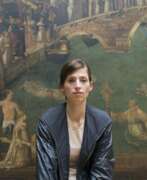

Pamela Rosenkranz is a Swiss multimedia artist.
She graduated from the University of Zurich, studied at the Academy of Fine Arts in Bern and at the Rijksakademie in Amsterdam.
Rosenkranz's conceptual work is built on an exploration of man's consumerist attempts to tame nature. She uses light and fluid to demonstrate her ideas, expressing them in the form of performance, sculpture, painting and installation.
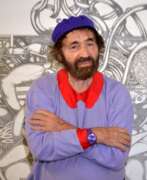

Alex Sadkowsky is a Swiss artist, painter, illustrator, graphic artist, photographer, performer, and writer. This multimedia artist has also created many portraits, among other things. According to Sadkowsky, his surrealist expressionism or expressive surrealism leads to "undepressionism.


Johann Jakob Schalch was a Swiss painter. He was a contemporary of the Swiss painters Anton Graff, Jean Preudhomme, Angelica Kauffman, Jakob Emanuel Handmann, Johann Caspar Füssli. His son Johann Heinrich Füssli was also a noted painter.
Schalch was noted for his paintings of the Rheinfall in Schaffhausen, many of which were reproduced as engravings, making his name well-known.
The Museum zu Allerheiligen in Schaffhausen owns the largest collection of Schalch paintings and drawings.
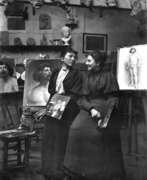

Adelheid Fanny Martha Stettler was a Swiss painter and engraver. She was one of the founders of the Académie de la Grande Chaumière, and was co-principal of the school from 1909 until 1945.
Stettler's subjects included many outdoor scenes of children playing in the Jardin du Luxembourg and the Tuileries Garden, as well as interiors, still lifes, landscapes, portraits and animal studies. Stettler's works are held by the Kunstmuseum Winterthur, the Museum of Fine Arts Bern, the Musée d'Art et d'Histoire in Geneva, the Musée du Luxembourg in Paris, and the Galleria Nazionale d'Arte Moderna in Rome.


Edmond Jean-Baptiste Tschaggeny was a Belgian animal painter. Tschaggeny first studied privately together from 1834 to 1835 with Eugène Joseph Verboeckhoven, then from 1837 to 1838 at the Académie royale des Beaux-Arts de Bruxelles. He painted scenes with cattle and horses in the style of Verboeckhoven. The young shepherds accompanying the animals gave his works a sentimental touch. He is also known for portraits of purebred horses and bulls that have won a prize. He worked in Campine from 1846 and was one of the pioneers of the Campine painting school. He was a founding member of the Société royale belge des aquarellistes. In 1854 he was awarded the Knight's Cross of the Order of Leopold. Towards the end of his life he spent the winter months in Algeria, painting North African motifs. He illustrated anatomical books devoted to veterinary medicine.
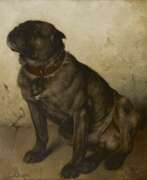

Wouterus Verschuur the Younger (Dutch: Wouterus Verschuur, also Wouter Verschuur) was a Dutch painter, student and follower of his painter father Wouterus Verschuur the Elder. The main theme of his work is horses, genre rural scenes, and landscapes.
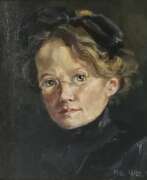

Mili Weber, full name Berta Emilie Weber, is a Swiss artist, illustrator, writer and musician.
From childhood, Mili showed an interest in nature and painting, with her older half-sister Anna being her first mentor. Mili attended the School of Arts and Crafts in Biel, where she later taught various arts and crafts subjects, she also studied at the Academy of Painting in Munich. From 1914, Mili began painting portraits of children, producing watercolor postcards with motifs from fairy tales and fables, and illustrating books. Her most famous images are of children among magical flowers. In addition to watercolor painting, Weber wrote short stories and composed music.
In 1917, the family moved to a picturesque wooden house built by Mili's brother and father on the edge of the forest near Lake St. Moritz. The most luxurious thing in this house was the organ on which she mused. Mili created her own wonderful world here: the artist decorated the ceilings and walls of the house with her marvelous frescoes of fairy tale scenes. She lived in this house all her life and now it is the home of the Mili Weber Museum, a "fairy house".
